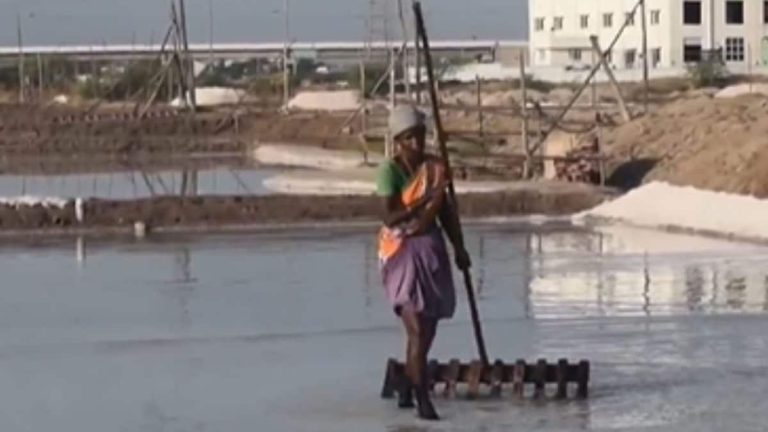Last updated:

The locals of Thoothukudi are mainly engaged in salt pans, fishing and tourism.
Salt is extracted from seawater with the help of the sun through a method called salt distillation without any chemical assistance.
In Thoothukudi, which leads to the Bay of Bengal in Tamil Nadu, fishery, conch bathing, salt production and many other industries related to marine resources are the main sources of income here. Let us see how salt production is done in Thoothukudi.
Salt is extracted from seawater with the help of the sun through a method called salt distillation without any chemical assistance. Salt distillation is a phase separation method that uses heat to separate salt from water. To do this, seawater is first transported from the sea to segmented beds where salt is produced.
The seawater reaching these square beds is dredged for 15 days to produce salt. After 15 days, salt will be produced and the salt will be removed individually from these beds. Once the salt is extracted individually, it is used for packaging.
According to employees involved in salt production in Thoothukudi, “Salt is produced using seawater from the sea. Then they work in Uppalam from 3 am. Also, no processing of salt is done during the monsoon as it does not work when it rains. It will be generated through rain. So we don't have any work in the rainy season, and we don't have any work in Uppalam from December. So, there is a problem in our life.
Thoothukudi is known as the “Pearl City” because of the pearl fishing that takes place in the town. It is a commercial seaport serving the inland cities of southern India and is one of the maritime gateways of Tamil Nadu. It is also one of India's major seaports, dating back to the sixth century AD.
Most people in Thoothukudi are engaged in salt pans, maritime trade, fishing and tourism. The 21 islands between the Thoothukudi and Rameswaram coasts in the Gulf of Mannar are considered India's first marine biosphere reserve and are home to about 36,000 species of flora and fauna. The protected area is called the Gulf of Mannar Marine National Park.
